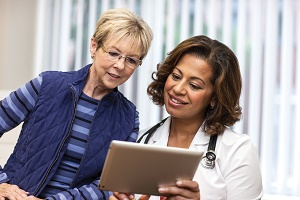ATD Blog
How to Achieve Healthcare Literacy, Part 2
Fri May 22 2015

Part 1 of this blog series asserted that the healthcare literacy challenge is akin to the language and communications challenges faced by every industry. Indeed, every market, company, and every project has its own lingo.
Although the healthcare industry attempts to educate its patients and caregivers, it is teaching exactly opposite to how people actually learn language. Perhaps it is time to adjust the learning process to improve healthcare literacy.
Current Approach Cannot Be Sustained
According to the United States Department of Health and Human Services (HHS), 90 percent of Americans need help understanding healthcare instructions. Dumbing down the language is not the best solution because the lingo and the language actually have meaning. A better approach is to smarten up the patients.
Research in linguistics, language acquisition, and neuroscience has uncovered the means by which adults learn new English terms and words. That’s good; the path is known. (You can check out a summary in Part 1 of this series or review a detailed summary in another ATD blog series, “The Language of the Workplace.”
In fact, adding words to patients’ vocabularies makes it easier to add even a few more words, thus building up a literacy capability. Maybe words like “modality,” “asymptomatic,” and “lesion” simply need to be treated as new vocabulary words. The specific words that any one individual needs to learn will be hard to gauge. Language is a moving target, ranging from basic healthcare to disease-specific terminology to health and wellness.
The good news: People are learning new terms all the time. Each new product introduction, television program, job, or neighborhood, and so on requires a new vocabulary. It stands to reason that, as a population, we can learn the language of healthcare—what we need and when we need it. If the language is continually stripped of its nuance and complexity, by presenting everything at the 6th grade level, then we are doomed to remain challenged by the vocabulary. Yet, the very definition of literacy is about the ability to comprehend complex vocabulary and concepts, and that includes medical terms or probability and risk.
The English language is rich in words and meanings. The greatest challenge to the healthcare community is that there is no way of knowing, in advance, which words and concepts are already in the vocabulary of its patients and caregivers. Let’s describe the complexity of the challenge with some data points:
There are 2400 words in the “kernel lexicon,” or those words needed for readers to understand 75 percent of what they read.
Second language speakers are considered “fluent” with a vocabulary of 3000 words.
The size of the vocabulary of a native English speaker depends on age, education, and experience, but it ranges from 10,000 to 25,000 words.
For reference, the Oxford English Dictionary has 250,000 entries, including 50,000 obsolete words. There are 1 million words in the English language.
People Want to Learn
Is it possible for someone with a large vocabulary to not know the meaning of COBRA or NSAID? Absolutely. Just as members of the medical community might not be comfortable talking about five-year ARMS or semi-definite positives. Patients and caregivers want to learn. According to Pew Research, 59 percent of U.S. adults looked up medical information on the Internet in 2013.
Healthcare providers can help with this learning and educational challenge. Enter language learning tools.
The way out of healthcare illiteracy isn’t to give in to it and talk to people in simplistic terms. Instead, let’s provide support and tools that enable patients and caregivers to grow their vocabularies and understanding. For example, while glossaries are considered “old school,” there are 21st century options.
Healthcare provider can become the curator of language, identifying terms, abbreviations, and acronyms that will be valuable and useful to a specific patient and caregiver population. Imagine giving the newly diagnosed patient a complete collection of terms, with usage and meaning, that covers the entire topic of their care, including hospital locations and labs, medical terms, testing and monitoring lingo , as well as frequently used acronyms, phone numbers, and more. This information could be made available for reference on their smartphone—while they’re talking to family and friends, reading on the web, or looking at directions.
Bottom line: Rather than hoping patients took good notes, caregivers could take advantage of modern technology to support the language learning needs of healthcare consumers.
